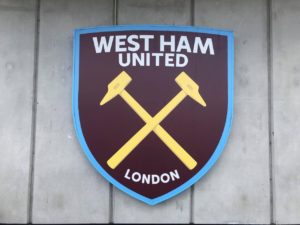East London can be considered something of a cultural melting pot in the UK – according to the 2011 census, 37% of the population were born outside the country, with many different cultures settling in the streets of the capital.
East London remains to be one of the most quickly developing areas in the country – with the Docklands area named as one of the largest regeneration projects in Europe. From the Dockers playing on Hackney Marshes in the 1930s, to the Canary Wharf based businessman playing PowerLeague in a multi-storey car park in 2021, east London has always found itself playing host to plethora of sports.
In recent years, many notable events and competitions have played out in the east end of the city, nurturing a sporting culture like no other in the country.
West Ham Team Of The 80s
West Ham United have been at the heart of countless east London communities over the years, but other than their exemplary performance this year, one season sticks out in the memory of Hammers fans in particular – 1985/86. Led by John Lyall, the Irons found themselves in third place at the end of the season, behind only Liverpool and Everton, by far and away the best two sides in the country at the time. This season included some impressive results, including an impressive 18-game unbeaten run.
West Ham talisman Frank McAvennie managed to score 26 goals in the league, while notching another two in other competitions – cementing his place in the folklore of the Boleyn Ground. Despite their fantastic year in the First division, due to the ban on European football for all English clubs, the Irons couldn’t compete in the next season’s UEFA cup competition, which would have broken the hearts of fans at the time.

Olympic History
East London etched itself into sporting history in 2012 – how could we forget? The London Olympics brought millions into the capital, putting the magnifying glass onto the UK as it strived to be seen as one of the most impressive nations in the world. Whether it’s the shiny and new infrastructure brought in to accommodate the onslaught of tourists, or the memories made when watching the world’s greatest go head-to head, the 2012 Olympics left a lasting legacy on East London.
The Jubilee line was extended, new stations were built and of course – the 60000-strong capacity London Stadium, now home to West Ham United. The Olympiad spelled a new era for sport in the capital, and the magnifying glass was on the east end.
Danny Boyle’s Olympic opening ceremony had us all celebrating what it meant to be British, highlighting the NHS and our rich artistic history. Of course, this was not London’s first crack of the whip when it came to hosting mega-events. Those old enough to remember the 1948 Olympic Games will lament an all-encompassing two weeks, kicked off by British Army bands playing to a 85000 capacity crowd, in glorious sunshine at the then-called Empire Stadium – to be changed to Wembley Stadium not long afterwards.
The games in London were the first to be filmed fully in colour, showing the world how far the UK had come in terms of technological developments at the time – something that was mimicked by the instantaneous reporting of the games in 2012, thanks to the foundations that BT lay.
The Fall of Leyton Orient
One more recent moment that some east Londoners won’t look back on fondly, would be the fall of Leyton Orient FC through the football pyramid, typified by their relegation into the National League in 2017 – ending their 112-year stay in the Football League.
The 2014/15 season saw them taken over by Italian businessman Francesco Becchetti, who’s arrival saw the end of Orient’s long-standing partnership with manager Russell Slade. The east London side were relegated from League One at the end of the season.
Following a mediocre season in League Two, missing out on the play off places by six points, the O’s nose-dived in the 2016/17 campaign. Through both financial instablility and inconsistency in performance, and under five different managers in the campaign, they found themselves relegated in April 2017.
Since then the O’s have managed to pull themselves back to where they feel they rightfully belong, in the Football League. They currently sit in 9th place in League Two, as their journey back up the divisions continues.
Looking Forward
While London continues to grow, and we head out the back end of the coronavirus pandemic, there is no way of knowing what the future of sport could hold in east London. With European Super League plans unfolding before our eyes, it is a stark reminder of how quickly things can change in the world of sport.
There is one thing for certain – the legacy of east London’s rich sporting history is still very much alive in the present day. As we see rallying cries to keep our beloved sports rooted in their tradition, there is no better case study than the east side of the capital.



